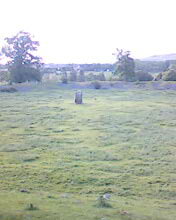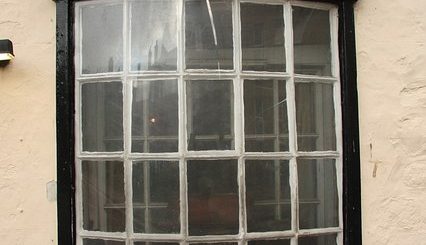Werewolves of Langavat
One of my pet peeves about the internet is the way that a single piece of data can get replicated so many times that it starts to look authoritative, but it is impossible to get to the substance behind it because everyone copies the same text. Is this particularly annoying with folklore or is it just me?
One of my pet peeves about the internet is the way that a single piece of data can get replicated so many times that it starts to look authoritative, but it is impossible to get to the substance behind it because everyone copies the same text. Is this particularly annoying with folklore or is it just me?
An example I’m trying to track down concerns a family of werewolves that used to live around Loch Langavat in Lewis, were killed and buried, and will rise again if their graves are disturbed.
As far as I can gather the original source is here:
www.paranormaldatabase.com/islands/outedata.php
From there, it made it’s way to Wikipedia, and from there on to who knows how many sites containing ‘lists of mysterious creatures’. But I can’t find any more than that.
Does anyone know of a real text source? Sounds like a great basis for a short story. I had always thought of werewolves as being Germanic rather than Celtic and I would be interested to see what sort of creatures are described in Lewis.
Anyway, I’m going to try and track this one down.
Steve.
http://celtlore.wordpress.com




Werewolves of Langavat
I have never heard of the story so could be dubious, would be interesting to find the original source though.
It’s not just the internet where things get copied and repeated, books on hauntings also repeat stories and mistakes from author to author, as mentioned in the copyright and sources section. I even know of a few hauntings that authors have invented but have been copied as ‘real’ events. Pluckley may be a good case in point. I imagine a lot of folklore started as tall stories centuries ago until they were put into text by researchers.
The internet does seem to create its own folklore however.
Loch Langavat
I have spent many months on the Isle of Lewis and had family living up there, but I have never heard of a werewolf legend based up there. In fact I am struggling to come up with a British or Irish werewolf tale.
I hope that you will share
I hope that you will share what you find out about the Loch Langavat werewolf story, as it has been of interest to me for a while now.
[quote=Ian Topham]In fact I am struggling to come up with a British or Irish werewolf tale.[/quote]
The word to look into is "Ossory", which is the most well-known instance (being mentioned in Gerald of Wales’ Description of Ireland.) However, there are many others, such as Saint Ronan. Dr. Bernhardt-House’s (so far unpublished) doctoral thesis, which he defended while at Cork, is about canines in Irish, Welsh, etc. cultures, and includes a substantial section on werewolves. Werewolf lore forms a substantial portion of British and Irish folklore.
Wulver
There’s always the Wulver, a wolfman type creature in Shetland Islands folklore.
Wulver
I can imagine that the Wulver would have come with the Vikings to the Shetlands.
Wulver / Norse in Hebrides
I hadn’t thought of the Wulver, thanks.
From what I’ve just read though, the main source for that creature, Jessie Saxby’s Shetland Traditional Lore, detials the Wulver as a very place-specific creature, found near a certain cave and rock (the Wulver’s Stane in the Shetlands), usually fishing. He was non-agressive, and seen over long periods, as recently as last century.
I’m thinking that the Langavat legend sounds quite different. However it is certainly possible that the Langavat legend was based on Norse ideas about wolfmen, seeing as they occupied the Hebrides during the middle ages, and maintained trade links afterwards.
Anyway, I think I’m just going to cut to the cjhase and contact the folks at the paranormal database to see what they have to say…
Steve.
Thank you for the pointer
Thank you for the pointer Faoladh 🙂 I really need to find out more about Irish folklore.
Welcome to the website, I hope you enjoy it.:)
Thankyou.I have been having
Thankyou.
I have been having a busy time of it lately with a move and preparations for a new life next year in Australia. So my input into this site got kind of waylaid.
There’s always next year…
http://celtlore.wordpress.com
OK folks…
However a bit of sniffing about confirms faoladhs assertion that the werewolf motif was alive and well in the Celtic countries. I found several accounts from Celtic lands – just nothing on Langavat so far.
For instance, you can download Irish writer Elliot O’Donnel’s book Werewolves over at http://www.gutenberg.org/etext/26629.
Here’s a sniff:
In a village at the foot of Ben MacDhui a shepherd of the name of ColinSteve.
http://celtlore.wordpress.com
Here’s a link to our Grey
Here’s a link to our Grey Man article and another area of interest close by
http://www.mysteriousbritain.co.uk/scotland/aberdeenshire/hauntings/the-grey-man-of-ben-macdhui.html
http://www.mysteriousbritain.co.uk/scotland/aberdeenshire/hauntings/glen-derry-cairngorms.html
Paranormal database wolves
Me again.
I’ve been onto the folk at the paranormal datbase and got the response that the Langavat tale comes from a book called Scotland’s Ghosts and Appaaritions by Terence Whitaker. Unfortunately for me there does not seem to be a single copy in Australia, so I’m stuck for the time being.
However, I’ve since hit on another tale that has piqued my interest for a similar reason, concerning an archaeologist who digs up the grave of a werewolf and leaves the bones in his kitchen, only to have its spirit try to get into his house during the night. He re-buries the bones the following day.
This tale is listed in O’Donnell as occurring in the Hebrides, but appears on the paranormal database as being set in the Lincolnshire Carrs (rich in folklore, that place), so possibily it is part of a widespread motif, a latter-day ‘travelling’ tale, and it also complements several other tales of bones being found that seem part human and part wolf….
Looks like the British werewolf is essentially an undead creature. I’m reminded of Phil Rickman’s The Man in the Moss, not so much in the werewolf aspect as in the idea of digging up reains out of peat-bogs that turn out to be not so very dead after all…
Anyway, see you folks soon…Happy New Year.
http://celtlore.wordpress.com/2008/12/22/elliot-odonnell-and-the-ghostly-internet-presence/
SJMcKenzie wrote:
However,
[quote=SJMcKenzie]
However, I’ve since hit on another tale that has piqued my interest for a similar reason, concerning an archaeologist who digs up the grave of a werewolf and leaves the bones in his kitchen, only to have its spirit try to get into his house during the night. He re-buries the bones the following day.
[/quote]
Some of this reminds me of Neils article about the Hexham Heads and the wolf of Allandale, not exact but it seems to have reflections in the story.
http://www.mysteriousbritain.co.uk/england/northumberland/legends/the-hexham-heads.html
OK, I have come to the end
OK, I have come to the end of the line here.
The story about Langavat werewolves is the same one as found in O’Donnell (see pages 105+). It’s just that Terence Whitaker, in Scotland’s Ghosts and Apparitions, has chosen to place the tale in Langavat, where as O’Donnell just said ‘The Hebrides’. But the main character is called ‘Warren’ in both cases so it is clearly the same tale.
Darren at the paranormal database was kind enough to send me a scan of the pages in Whitaker which I have put online here in preparation to write a blog post on this subject.
As a postscript, Whitaker was not the only person to borrow the tale from O’Donnell. Much earlier, in 1926, Christopher Marlowe (not the poet) wrote a book called The Fen Lands, including exactly the same tale, but placing it in Linciolnshire. That version appears here and also on BBC Lincolnshire.
I can’t find much about Marlowe’s book online and it looks fairly obscure, so really I’m just guessing when I say that the tale – which is too specific to be a ‘travelling tale’ or a widespread archetype – has simply been borrowed by Marlowe from O’Donnell’s book of fifteen years earlier, and relocated closer to home.
Anyway I have enough juicy werewolf stuff to start writing my tale, which will start with the idea of digging up bones and take it from there. There’s going to be more than one werewolf, that is for sure.
Steve.
http://celtlore.wordpress.com
Thankyou.
That is awesome. I didn’t know about the Hexham Heads story. It is a very similar tale. In the werewolf tale it is clearly the skull that carries the bulk of the power.
From a literary point of view it reminds me of several M.R. James ghost stories. Find a strange ancient object, take it inside the house, and haunting ensues.
Anyway, cheers. I might see if I can find some pictures of the heads…
http://celtlore.wordpress.com
SJMcKenzie wrote:
From a
[quote=SJMcKenzie]From a literary point of view it reminds me of several M.R. James ghost stories. Find a strange ancient object, take it inside the house, and haunting ensues.
[/quote]
Never did manage to track down any M.R. James stories, I had always planned to after watching the short film adaptations – I think they where shown on BBC at one time, are the books any good?
…
There’s plenty of stuff online. O Whistle and I’ll Come To You My Lad, and Casting the Runes are the ones I had in mind. Yes they are good; not very scary, but fun in a kind of old-fashioned kitsch way. Horror is a genre that really dates, if you know what I mean.
http://celtlore.wordpress.com